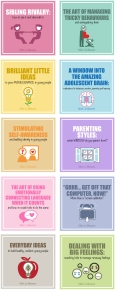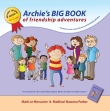Teaching Tough Kids
Chapter 3
Inspiration to improve concentration and task completion
Inside Tough Kids with poor attention and impulsive behaviours
Overview; Attention Deficit Disorder (ADD) & Attention Deficit Hyperactivity Disorder (ADHD) Medication and alternative therapies
Ideas to ease physical restlessness
- Legal movement
- Tall desks
- X marks the spot
- Coloured tokens and raffle tickets
- Class monitors
- Plan to burn energy
- Organise for double PE or sport lessons
- Fidget toys
- Think strips and wrist bands
- Developing rules and expectations
- Structure
- Classroom set up
- A study buddy
- Physical proximity
- Signals
- Work to music
- Become expert at chunking tasks
- Case study, an improvement plan with a difference
- Case study, gardening and school maintenance as a positive reinforcement plan
- Case study, collector cards as positive reinforcement
- Lucky dips
- Star charts
- Star of the day
- Catching helpful behaviours
- Golden time
- Class superstars
- Timers can help
- Self-monitoring
- Student-monitoring
- Choice of language
Attitude
Self talk and attitude
Conclusion: more than knowledge
This chapter is dedicated to the kids who battle relentlessly busy minds, intrusive thoughts, impulsive acts and endlessly restless bodies.
Quietly, his teacher redirected this urge and encouraged him to return to his desk and to complete his sketch. She handed him is workbook. Troy acquiesced and moved away, but he didn't return to his desk. Instead, he bounced around the classroom looking for something to draw with. Finally he chose to stand and draw near the window, placing his paper on the window sill. His drawing took all of twenty two seconds to complete. Then, he bounced back to his teacher to show her, also managing to show it to at least nine others on the way. She praised his work and directed him to another activity in the classroom. He appeared delighted with this, however quietly seeped from the room to investigate the noise coming from a group of students engaged in an art activity in the hallway. Troy happily chatted and wandered about the group. His interaction was energetic, chaotic and very good natured.
After a while his teacher called him back. Once again he obliged, yet as soon as her attention was taken from him, he slipped back out of the classroom again. Then, as luck would have it, a school support officer who often worked with him arrived. Troy was happy to see her and skipped ahead of her twirling around and around as he went. As she brushed past me she commented that he'd had one of his "very busy mornings". She thought his teacher, and the class, may appreciate the break.
These kids will tell you as they get older how unbearable it is to live with noisy, impulsive thoughts in their heads. Just think how hard it must feel to have to run at one frenetic pace all the time? It is not the way they choose to be. The choice is not theirs. As one of my clients explained, I came home from work with some 'be happy herbal tea' for Ally. Like me, she's enjoys a cup of tea and lately we've been experimenting.
"Great," she said, "I just wish there was a 'think before you do tea'".
In this chapter there are dozens of truly, simple practical ideas to help modify for the inconsistencies and performance variability of students identified with short concentration spans, impulsivity and behavioural hiccups. However, two central questions remain for your personal consideration.
Firstly, how many of these strategies are you likely to integrate into your classroom practice? In the end, the best way to influence a student's emotion, attitude or habit is to change what we do. Success is more than the acquisition of knowledge. It is placing the information into action. All the best strategies involve setting routines, noticing and rewarding the behaviour we want, artfully avoiding public confrontations and modelling the behaviours we want from students. Secondly, what value do you assign to these kids? Do you see them as nuisance value, or do you value their potential? There is no doubt about it, working with kids who lack the capacity to apply what they have learnt in the past at the very moment they need it is testing.
The wisdom of hindsight whispers it is most productive to see these young people as whole, healthy human beings with boundless potential, albeit less directed at the moment...
Plus single $20 postage and handling fee












